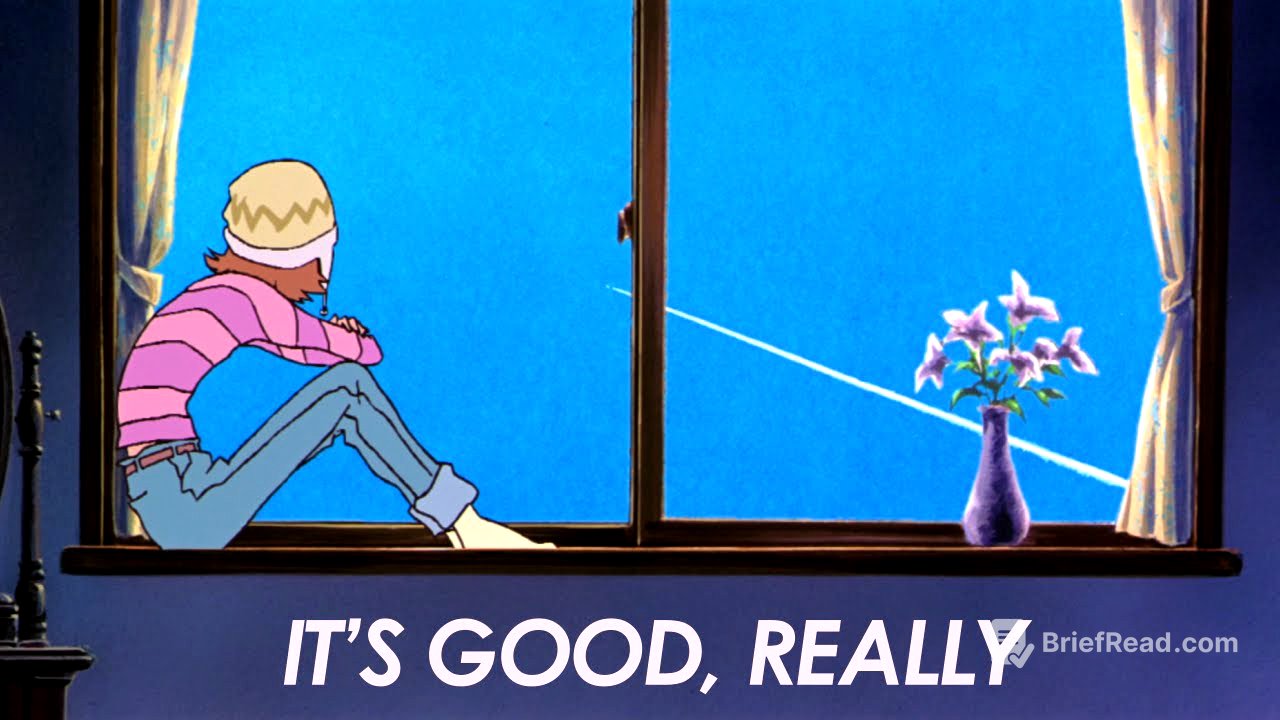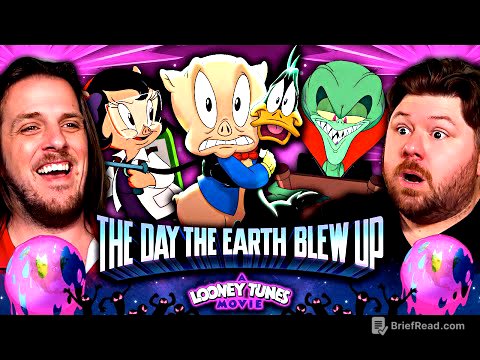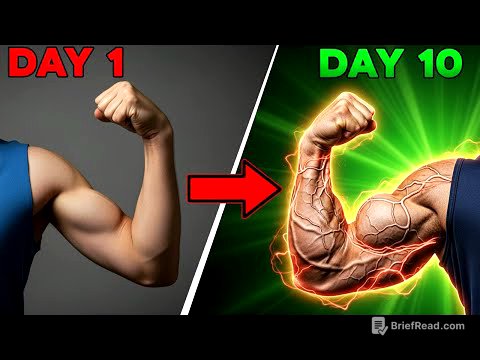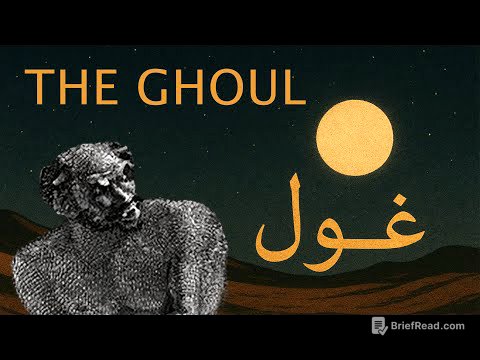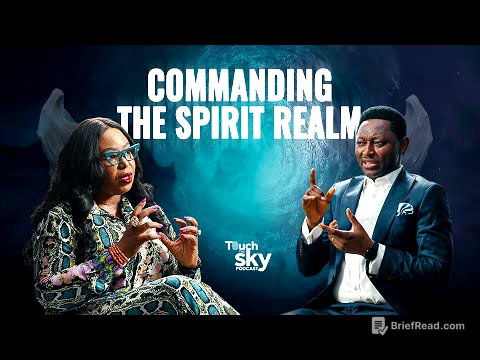TLDR;
This video explores the history, production, and cultural impact of "Digimon: The Movie," arguing that despite its flaws, it's a unique and enduring piece of media. The video breaks down the three Japanese short films that were combined to create the movie, examines the American anime industry leading up to its release, and discusses the creative decisions made to appeal to Western audiences.
- The movie is a time capsule of the year 2000.
- The American adaptation of Digimon was inadvertently faithful to the original.
- The movie's soundtrack was generally praised for its eclectic choice of 2000's pop alt Rock SCA Punk and Hip-Hop
Intro [0:00]
The video introduces "Digimon: The Movie" as a potentially confusing compilation of three short films by Saban Entertainment. Despite criticisms of being messy and overly talkative, the movie is often praised for its charm, humor, and soundtrack. The video aims to explore why the movie is considered a "dumpster fire" by some, while others view it as a legitimately good adaptation that stayed true to the spirit and personality of the Japanese short films. The video will break down the film, starting with the history of the American anime industry leading up to the year 2000, to understand the landscape in which the movie was adapted.
What is Digimon? [1:57]
Digimon, short for Digital Monsters, is a multimedia franchise including toys, TV shows, manga, video games, movies, and trading card games. Digimon are beings made of computer data living in the digital world, with the lore of this world varying across different canons. The franchise began as virtual pet toys by the same team behind Tamagotchi. Akosi Hongo, credited as the series creator, is a combination of the names of the Project's core development team. The first season of the anime, Digimon Adventure, follows seven kids transported to the digital world who team up with Digimon to return home. With the help of a human partner, Digimon can digivolve into more powerful forms using a Digivice. In 1998 or 1999, Toei Animation was approached by Bandai to create a 20-minute short film showcasing what Digimon were meant to be.
Part 1: Who can count backwards from 2000? [3:51]
In the 1960s, early anime was geared towards children with simple stories based on fairy tales, folktales, and daily life sitcoms. Japanese animators were influenced by Disney's success, with Osamu Tezuka, creator of Astro Boy, drawing inspiration from American culture. His company, Mushi Pro, dominated early Japanese TV. By 1969, much of Japanese animation was similar to American cartoons. In the 1970s, animation and sci-fi were looked down upon, especially in America. Hayao Miyazaki preferred fantasy over science fiction, disliking industry, technology, and the present. Despite this, series like Lupin the Third, Devilman, and Space Battleship Yamato emerged, featuring dramatic, adult stories with well-developed characters and violence. The American adaptation of Space Battleship Yamato, Star Blazers, was heavily censored to be more palatable to American audiences. The Star Wars boom in 1977, heavily inspired by Kurosawa's The Hidden Fortress, signaled the introduction of East Asian culture to the United States.
Saban Entertainment [9:59]
Saban Entertainment, founded in 1980 by Haim Saban, started as a music production company. Saban discovered a loophole in music copyright, retaining rights to music licenses for cartoons. Saban and Shuki Levy created popular 80s cartoon themes like X-Men, Inspector Gadget, He-Man, and She-Ra. Saban pitched the show Bioman for 6-8 years before Fox took a chance on it in 1993, renaming it Power Rangers. Power Rangers, an adaptation of Super Sentai, was produced by Toei, the same studio that created Digimon, and the toys were made by Bandai. Saban faced disputes with SAG due to underpaid child actors on Power Rangers, leading to a boycott. Another dispute arose during the production of Digimon the movie, regarding residuals for actors. Saban achieved his first billion dollars in 1995 thanks to Power Rangers.
Back to the Past [15:10]
In the 1990s, faster production cycles and the Consumer Electronics boom led to actively localizing Japanese media to suit American tastes. New technology like computers with production software, email, and cheaper VCRs changed our relationship with media. VHS tapes were crucial for sharing early anime in the US, with fans recording episodes and anime clubs making copies. Fans wrote episode synopses, transcripts, fan subs, and dubs to get anime out there. People in America were getting bored of American media, and franchises aimed towards children began popping up in Japan and America, including Sailor Moon, Yu-Gi-Oh, Pokémon, and Digimon. Saban likely struck a deal with Toei and Bandai directly, considering the short time between the release of the first season in Japan and America. The American adaptation of Digimon was inadvertently faithful to the original, leading into the year 2000. Japanese intellectuals proclaimed Japanese products indispensable to American daily life. The Y2K scare arose due to the dependence on technology.
Part 2: Like A Based God Cursed [18:28]
This section serves as an introduction to the next chapter.
Digimon Adventure (1999) [18:38]
The movie project began about a month and a half earlier than the series in February or March of 1998, and the creative team didn't have much to work with character-wise. The monster designs were done by Kenji Watanabe, who drew inspiration from American comics. Katsu Yoshi Nakatsuru, one of the character designers for Dragon Ball, did atypical cool retro character designs for the show. The movie is set in a different timeline to avoid contradictions with the show. The characters from the series weren't in the original storyboards, but were included to create a link to the series. The original concept was a spin-off of the V Jump manga series, with Taichi's dad as the main character, set during the 1964 Tokyo Olympics. Mamoru Hosoda, one of the biggest directors in anime, made his directorial debut with Digimon Adventure.
Cold Open [23:29]
The VHS opens with a synopsis of the series, going through the main characters and the concept of Digimon. The Angela Anaconda promo at the beginning of the film took up four minutes.
Digimon: The Movie Part 1 [25:07]
The video skips over a detailed summary of the first movie's adaptation, noting it remains faithful to the original, except for some minor changes. The Ki narration and talk of his dad as a character were removed. The changes to the score created a cohesive tie between all three parts of the movie.
Our War Game! [26:39]
"Our War Game!" is the best movie of the three, with a neatly packaged story. The DigiDestined are on summer vacation after the events of the first season, and one of them sees a Digi-Egg become infected with a computer virus. The virus starts eating computer data from all over the Internet, messing with daily life and digivolving incredibly quickly. Only the kids still at home or near a computer can beat it and save the day. Most of the Digimon Adventure kids are busy, so only Tai, Matt, Izzy, and TK are available to fight the monster. The movie shows that one of the true battles is being able to gather your group of people after real life sets in. It was originally meant to be about the Y2K problem but was simplified to make it timeless. Diaboromon is more natural disaster than evil, like a digital Kaiju. The title is inspired by the 1983 movie WarGames. The countdown at the end was inspired by the 1994 film Speed. The film has colorful animation and a unique depiction of the internet. The first film was traditionally cell-animated, while the second features early CGI. Hosoda wanted the film to be comedic from an objective point of view, using exaggerated facial expressions, movements, and gestures.
Digimon: The Movie Part 2 [31:17]
The dub is a joy to watch thanks to the writers Jeff Nemoy and Bob Buckles. Jeff Nemoy started out his career by competing in rap competitions and being involved in some improv groups. Bob Buckles has mostly worked as an English language director. They inserted humor that was topical for 2000s America. Characters that aren't really present get some character added to them. There are a lot of good localization decisions that they made for the film. The concept of a Digi-Egg and the computer is connected to the first short film, and the character of Willis is added from the third film. Diaboromon, previously a non-existent threat that paralleled Y2K and nukes, now gets new voice lines, motivations, and is outright malicious as a villain.
Part 3: What to Do with Part 3 [36:13]
This section serves as an introduction to the next chapter.
Hurricane Touchdown [36:24]
"Hurricane Touchdown" was directed by shasu Yamauchi, who was a mentor to kunihiko ikuhara and mamoru hosoda. Yamauchi has a distinct visual style, including deep color contrast, expressive close-ups, and camera angles that convey abstract themes. The movie tackles the theme of making mistakes and accepting that the past is over. The story is about Wallace's Digimon getting infected with a virus and kidnapping the original DigiDestined to find Wallace as a kid again. The 02 gang comes together to fight cookon and it digivolves. The movie has an eclectic soundtrack full of odd electronic jazz fusion and Americana and folk music.
Digimon: The Movie Part 3 [39:36]
The adaptation of this film is better. In the American version, it's Willis's fault that a virus was let out to infect both his Digi-Egg and one of his twin Digimon. The movie fixed a lot of things that add to the story and cut down on the long hour and a half track time. The older kids get to go back home to where they come from. The pacing is at a bright neck speed. Any actual comedy just seemingly feels like it's done by accident.
The Soundtrack [42:19]
Digimon the movie's whole soundtrack was generally praised for its eclectic choice of 2000's pop alt Rock SCA Punk and Hip-Hop. More music was thrown in in an effort to appeal to a wider audience. They included licensed music from popular artists at the time, as well as including stuff that was just at the top of the charts or really big hits on the radio at the time. Smashmouth was hesitant to license any of their music for film. The Canadian band Len was approached to cover Kim Wild's 1981 hit Kids In America. The soundtrack got filled in with some great Originals by two other composers that were approached to create checks Paul Gordon and Jason Radford. Saban and Fox put in a lot of effort and money to make this movie sound good. The sound design is extensive, and it's even recorded in 5.1 audio.
2000 and Beyond [47:18]
After Digimon the movie, season 3 of Tamers would leave the adventure universe. They would go back to continue the story of the second film with revenge of diaab boron in 2001, which would eventually get adapted by Disney in 2005. In 2016, they began to release six films as the Digimon try series, as well as releasing last evolution kazuna in 2021.
Where Do You Go From Here? [50:09]
Haim Saban became a billionaire and sold Fox kids to Disney in 2001. Besides doing philanthropy work and being involved with the Democratic party, he has gotten back into the music industry again with the Saban music group. Mamoru Hosoda has been slated as the next M aaki. In his films, he's been exploring the same thematic and visual motifs that he did in Digimon. Shikay yasuyama Uchi would take a huge break. Bob buls remains a man of mystery. Jeff nemoy has said that Digimon really gave him a credibility that he didn't have before.
Sigh [53:44]
This section serves as a transition to the next topic.
Part 4: Dead Weight [54:03]
This section serves as an introduction to the next chapter.
Low-Hanging Fruit [54:12]
The video addresses the comparison between Digimon and Pokémon, arguing that they are fundamentally different. Digimon focuses on working together with different personalities to face life-threatening situations, while Pokémon focuses more on exploration and freedom. The first Pokémon movie is a cash grab, and its story has nothing to do with Digimon the movie.
Dubs Over Subs [58:37]
The video discusses the necessity of dubs, noting that early subtitling was difficult. Some filmmakers believed that film should be watched, not read.
Net Fandom [59:24]
The internet in the early days was an indispensable outlet for fan engagement. It used to be lame to like anime. Around the late 1990s, people realized it was easier to make a website than they thought. There were a combination info site plus blog in this era pre Wikipedia and pre- Tumblr and pre-live journal.
Mind the Gap [1:00:29]
The video discusses fan creations, including fan dubs and Abridged series. Some of the notable groups from these early days are pine salad Studio Soo and seun Chas.
The Weight of Digimon: The Movie [1:01:15]
The video reflects on the weight and influence of "Digimon: The Movie," noting that its true goal was to entertain a population that had never seen anything quite like Digimon. The people who made it knew exactly where the problems were and did their best to fix this movie. The English dub of Digimon added something to the franchise that wasn't there before. The real reason it endured was the fandom. Mamora Hoda has gone on to recreate multiple scenes and storylines in his newer films all that started from Digimon Adventure.
